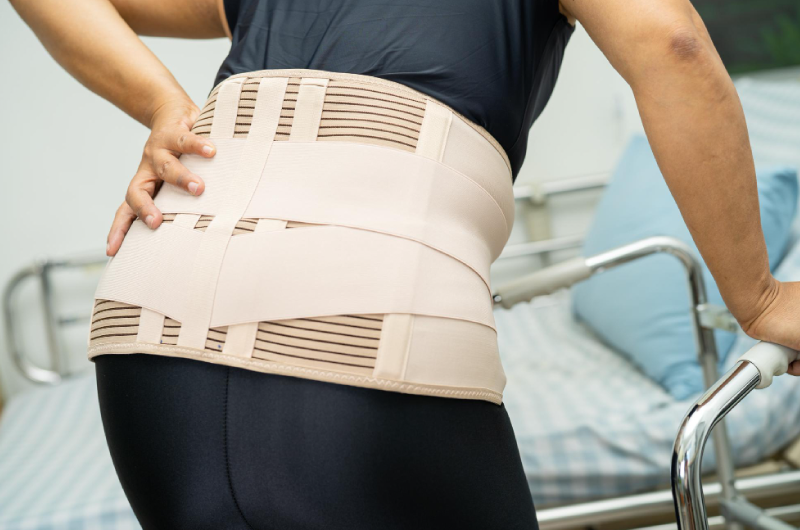Fractures of the proximal femur, commonly referred to as hip fractures, are common among elderly patients with osteoporosis. While many of these fractures are both clinically and radiologically apparent, others can be more challenging to identify. In such cases, additional imaging studies, including repeat X-rays, CT scans, or MRIs, may be necessary to confirm the diagnosis. Beyond the complications in establishing the diagnosis, accurately reporting hip fractures using ICD-10 codes presents its own challenges, as the coding process demands a high level of specificity and detailed documentation. Partnering with an orthopedic medical coding company can help ensure precise coding, reducing the risk of errors and optimizing reimbursement for your practice.
Maximize your practice’s revenue with expert orthopedic coding and billing services!
Types of Hip Fractures and Their ICD-10 Codes
Hip fractures either involve bone enveloped by the ligamentous hip joint capsule (intracapsular) or the bone below the capsule (extracapsular). The most common types of hip fractures are:
- Femoral Neck Fracture: Also known as a subcapital or intracapsular fracture, this occurs in the area of the femur just below the ball (femoral head).
- Intertrochanteric Hip Fracture: This type of fracture involves the intertrochanteric region, located below the femoral neck and above the shaft of the femur.
- Femoral Head Fracture: This fracture affects the femoral head, the ball-shaped portion of the femur that fits into the hip socket.
- Subtrochanteric Fracture: This occurs in the subtrochanteric region, which is the upper part of the femoral shaft located just below the greater and lesser trochanters.
Accurate ICD-10 coding depends on detailed clinical documentation to capture specifics about fracture type, location, laterality (right, left, or unspecified), and adding extensions to indicate the encounter and healing process.
Intracapsular Hip Fractures
Intercapsular fractures involve the femoral head or neck, which are within the joint capsule. They include fractures below the femoral head (subcapital), across the mid-femoral neck (transcervical) or fractures across the base of the femoral neck (basicervical). You need to choose an appropriate code that reflects the type of fracture (open or closed), laterality (left or right), episode of care (initial, subsequent and sequela) and complications (delayed healing, non-union, malunion):
- S72.0: Fracture of the neck of the femur (includes intracapsular fractures)
- S72.001: Unspecified femoral neck fracture, right side
- S72.002: Unspecified femoral neck fracture, left side
- S72.009: Unspecified femoral neck fracture, unspecified side
- S72.031: Displaced fracture of the femoral neck, right side
- S72.032: Displaced fracture of the femoral neck, left side
- S72.039: Displaced fracture of the femoral neck, unspecified side
- S72.041: Nondisplaced fracture of the femoral neck, right side
- S72.042: Nondisplaced fracture of the femoral neck, left side
- S72.049: Nondisplaced fracture of the femoral neck, unspecified side
Extracapsular Fractures
Extracapsular fractures occur outside the joint capsule, such as in the intertrochanteric or subtrochanteric regions.
- S72.1: Pertrochanteric fracture of the femur (includes intertrochanteric fractures)
- S72.101: Unspecified pertrochanteric fracture, right side
- S72.102: Unspecified pertrochanteric fracture, left side
- S72.109: Unspecified pertrochanteric fracture, unspecified side
- S72.111: Displaced intertrochanteric fracture, right side
- S72.112: Displaced intertrochanteric fracture, left side
- S72.119: Displaced intertrochanteric fracture, unspecified side
- S72.121: Nondisplaced intertrochanteric fracture, right side
- S72.122: Nondisplaced intertrochanteric fracture, left side
- S72.129: Nondisplaced intertrochanteric fracture, unspecified side
- S72.2: Subtrochanteric fracture of the femur
- S72.201: Subtrochanteric fracture, right side
- S72.202: Subtrochanteric fracture, left side
- S72.209: Subtrochanteric fracture, unspecified side
Here are some examples of these hip fracture ICD-10 codes along with extensions to indicate the encounter and healing process.:
- S72.141A: Displaced intertrochanteric fracture of right femur, initial encounter for closed fracture
- S72.141B: Initial encounter for open fracture type I or II
- S72.141C: Initial encounter for open fracture type IIIA, IIIB, or IIIC
- S72.141D: Subsequent encounter for closed fracture with routine healing
- S72.111G: Displaced intertrochanteric fracture, right side, subsequent encounter for fracture with delayed healing
- S72.112K: Displaced intertrochanteric fracture, left side, subsequent encounter for fracture with nonunion
- S72.012M: Unspecified intracapsular fracture of left femur, subsequent encounter for open fracture type I or II with nonunion
- S72.012N: Unspecified intracapsular fracture of left femur, subsequent encounter for open fracture type IIIA, IIIB, or IIIC with nonunion
These extensions allow ICD-10 codes to provide greater specificity, which is crucial for proper billing, documentation, tracking complications, and planning appropriate treatment for severe fractures.
ICD-10 Codes for Pathological Hip Fractures
Pathological fractures occur due to bone diseases or conditions weakening the bone structure, while traumatic fractures result from external forces or injuries.
While traumatic fractures are typically identified based on injury history and imaging, pathological fractures often require additional tests (e.g., bone scans, biopsies, or lab work) to identify the underlying condition.
Femoral neck fracture, intertrochanteric hip fracture, femoral head fracture, and subtrochanteric fracture can occur due to trauma or pathological conditions depending on the cause and the patient’s health.
Here are some examples of ICD-10 codes for pathological fracture of the hip:
Pathological Fracture Due to Osteoporosis
- M80.051D: Age-related osteoporosis with current pathological fracture, right hip, subsequent encounter for fracture with routine healing.
- M80.051G: Age-related osteoporosis with current pathological fracture, right hip, subsequent encounter for fracture with delayed healing.
- M80.051K: Age-related osteoporosis with current pathological fracture, right hip, subsequent encounter for fracture with nonunion.
- M80.052D: Age-related osteoporosis with current pathological fracture, left hip, subsequent encounter for fracture with routine healing.
- M80.052G: Age-related osteoporosis with current pathological fracture, left hip, subsequent encounter for fracture with delayed healing.
- M80.052K: Age-related osteoporosis with current pathological fracture, left hip, subsequent encounter for fracture with nonunion.
Pathological Fracture Due to Neoplastic Disease
- M84.551D: Pathological fracture in neoplastic disease, right femur, subsequent encounter for fracture with routine healing.
- M84.551G: Pathological fracture in neoplastic disease, right femur, subsequent encounter for fracture with delayed healing.
- M84.551K: Pathological fracture in neoplastic disease, right femur, subsequent encounter for fracture with nonunion.
- M84.552D: Pathological fracture in neoplastic disease, left femur, subsequent encounter for fracture with routine healing.
- M84.552G: Pathological fracture in neoplastic disease, left femur, subsequent encounter for fracture with delayed healing.
- M84.552K: Pathological fracture in neoplastic disease, left femur, subsequent encounter for fracture with nonunion.
Other Pathological Fractures of the Hip
- M84.45D: Pathological fracture, pelvis and femur, subsequent encounter for fracture with routine healing.
- M84.45G: Pathological fracture, pelvis and femur, subsequent encounter for fracture with delayed healing.
- M84.45K: Pathological fracture, pelvis and femur, subsequent encounter for fracture with nonunion.
- M84.459S: Pathological fracture, pelvis and femur, unspecified side, sequela.
Ensure Comprehensive Clinical Documentation
Always ensure clinical documentation that supports the chosen hip fracture ICD-10 code. Comprehensive documentation should include detailed information about the following:
- Type of fracture (e.g., femoral neck, intertrochanteric, subtrochanteric)
- Side of the fracture (right, left, or bilateral), the cause (trauma or pathological condition)
- Type of encounter (initial, subsequent, sequela).
For pathological fractures:
- Underlying conditions, such as osteoporosis or neoplastic disease
- Healing status of the fracture (routine healing, delayed healing, or nonunion)
Including relevant clinical history, imaging findings, and treatment plans helps ensure that the code selected reflects the patient’s condition accurately, supports medical necessity, and facilitates appropriate reimbursement.
Overcome Coding Challenges with the Right Support
Hip fracture coding presents challenges for both physicians and coders, but, as an AAPC article notes, its impact on Hierarchical Condition Category (HCC) funding in Medicare Advantage and health plan Star ratings makes accurate coding essential.
Understanding fracture types and how ICD-10 differentiates between initial and subsequent visits is crucial for proper documentation and reimbursement. It is also essential to consider the complications associated with intertrochanteric (rarely, nonunion or malunion, degenerative changes) and subtrochanteric (high rates of nonunion and implant fatigue as a result of high physical stress in the region).
Medical coding outsourcing can provide access to expertise in orthopedic billing and coding. With clear and thorough documentation, experienced coders can ensure accurate coding, reducing risk of denials and delays in claims processing.
Ensure precise coding of osteoporotic fractures for optimal care and reimbursement!
To contact our expert team




